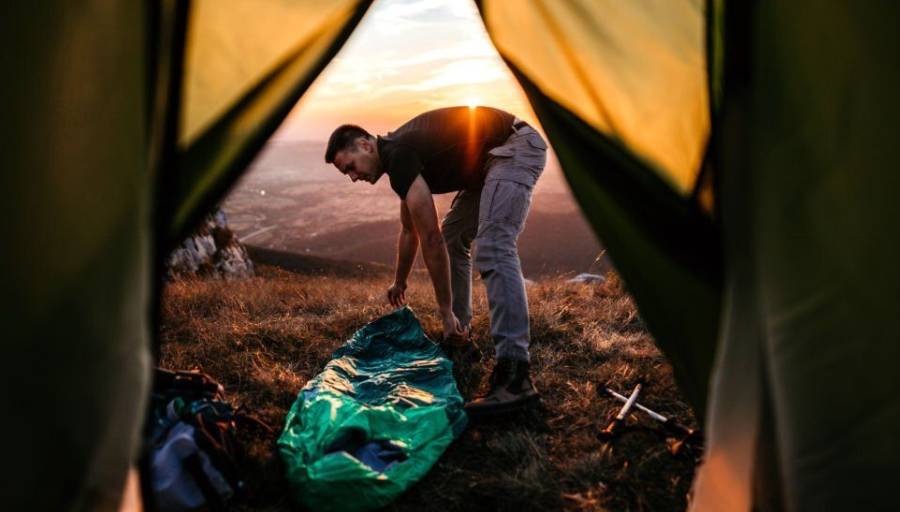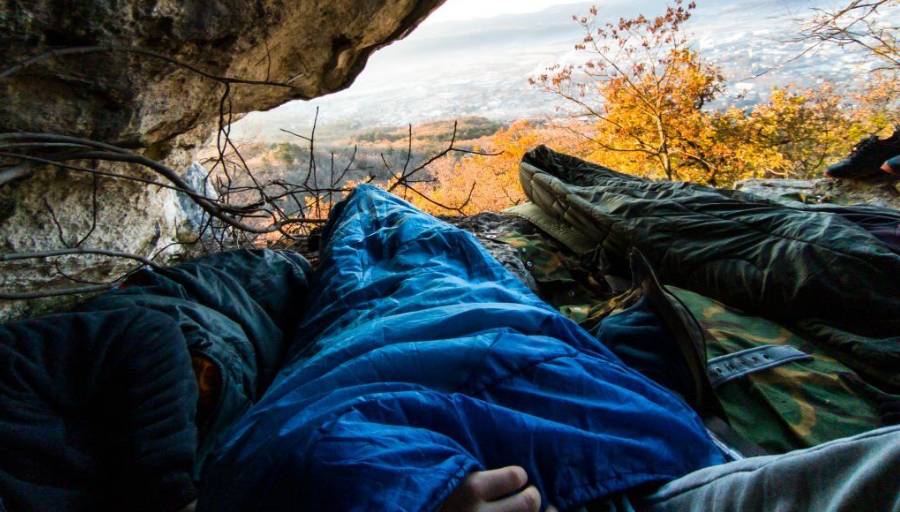Sleeping Bag Temperature Ratings Explained
What does temperature information on sleeping bags actually mean? This information, which manufacturers print on their sleeping bags, is often confusing for newcomers to trekking and camping. To determine the ideal sleeping bag temperature rating for your purchase, consider both the intended areas of use and the seasons.
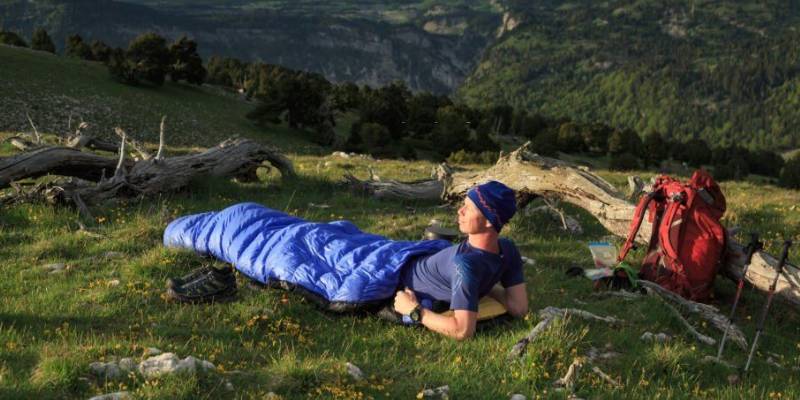
The temperature the sleeping bag should show depends primarily on the season. In summer, the sleeping bag should have a temperature range of -1 °C and higher, in spring to autumn -9 °C to -1 °C, and in winter -9 °C and lower. This is an oversimplification though – the time of year is just one factor.
Let’s see the nuances of sleeping bag temperature ratings to empower you in making informed decisions for your outdoor pursuits.
Understand Sleeping Bag Temperature Ratings Correctly
First of all, it is crucial to pack a sleeping bag that feels too warm rather than too cold. If a sleeping bag is too warm, you can always open the zipper. If you also want to use a sleeping bag in autumn and winter, you should choose a model that is designed for low temperatures.
The following table shows the respective sleeping bag type in relation to the season and which temperature ranges are suitable.
Sleeping bag type – Temperature range (°C)
- Summer – 1° and higher
- Three seasons – 9° to -1°
- Winter – 9° and lower
Please note that this can only be used to compare the temperature of one sleeping bag with that of another. Other factors also play a big part, more on that later.
What Does the Temperature Mean for Sleeping Bags?
Anyone who has ever searched online for a sleeping bag will quickly come across the temperature ranges that manufacturers give the sleeping bag. However, these temperature ratings are often inaccurate or even completely off the mark. Of course, one could come up with the idea of blaming the manufacturer for this “misstatement” of the temperature range. But that would not be justified. The reason for this is the fact that a certain sleeping bag at a specific temperature simply cannot keep everyone equally warm.
Before the establishment of standardized temperature ratings for sleeping bags, manufacturers relied on a somewhat subjective measure based on the “average person.” This assessment involved providing sleeping bags to release employees and testers who would then use the models in various temperature conditions.
The reason the average person has such a problem with sleeping bag temperature ratings is that everyone sleeps at different body temperatures. Cold sleepers need a much warmer sleeping bag than warm sleepers.
Cold sleepers vs. warm sleepers
In order to understand the concept of cold sleepers and warm sleepers, the test is suitable at home at 20 °C in your own bed with different numbers of blankets.
What is a cold sleeper?
A cold sleeper sleeps in a bed with several blankets, even in a well-tempered room, and still wakes up feeling cold. This is primarily due to a slow metabolism at night. The body of a cold sleeper produces little body heat, so several layers of fabric and blankets are needed.
What is a warm sleeper?
Warm sleepers typically need minimal or no blankets. Some may start the night with a thin blanket, but it often ends up discarded as their bodies generate a significant amount of heat. These individuals naturally produce a lot of body heat, which explains their preference for lighter bedding.
Classification of Sleeping Bags into Categories: Seasons
In principle, manufacturers and retailers base their classification of sleeping bags on the seasons. This makes sense if we, as consumers, choose a sleeping bag that should suit our intended trip and the weather conditions prevailing there. The most common approach is to classify sleeping bags as summer, tri-season and winter. This has been established, among others, by large American outdoor companies, for example, rei.
Sleeping bag type – Temperature range (°C)
- Summer – 1° and higher
- Three seasons – 9° to -1°
- Winter – 9° and lower
In addition, there are sources that also include expedition sleeping bags as a fourth category. In fact, winter sleeping bags have a wide temperature range. This more precise classification is therefore particularly interesting for winter trekkers. However, the temperature assessment and therefore the classification into these categories is based on an “average” sleeper, which does not exist in reality.
Summer sleeping bag
Summer sleeping bags are known for trekking in the warmer months. Festival campers or campground visitors usually fall into this category. The weight of the sleeping bag is particularly important for backpackers – they want to save every gram. Synthetic fiber models predominate, but there are also down sleeping bags for the summer.
Three-season sleeping bag
Three-season sleeping bags are designed for the spring, summer and fall, making them a good choice for cool nights between seasons. Since they are designed to cover a longer period of time, the models in this category are very diverse. At the same time, it is the largest division in the market. So there are sleeping bags with down or synthetic fibers that are appropriate for this time.
Winter sleeping bag
Winter sleeping bags are used for expeditions and camping in cold regions, camping and trekking in winter. Since the heat output is in the foreground here, the down filling can be found in many winter sleeping bags. Choosing a sleeping bag that really suits the climate and winter weather is crucial for your own safety. The best sleeping bags in this category are often correspondingly expensive.
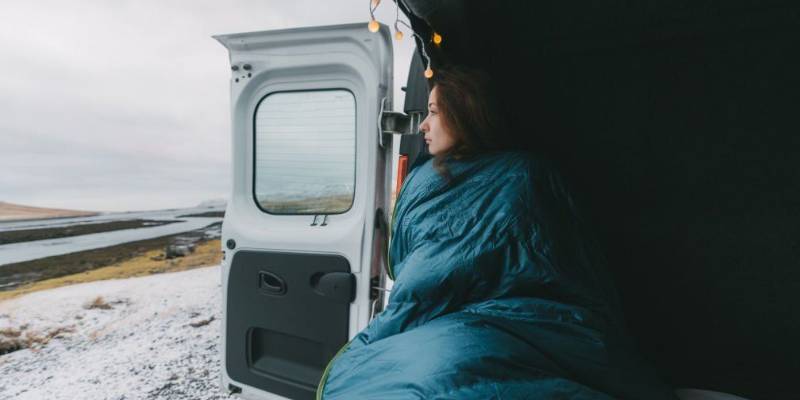
Temperature Specifications According to DIN EN ISO 23537
Anyone looking for sleeping bags in online shops will quickly come across manufacturers who specify the temperature range of the sleeping bag according to DIN EN ISO 23537. As a consumer, this information is significantly helpful when making a selection in order to improve the comparability of models and to identify a suitable sleeping bag for cold regions and seasons.
What does DIN EN ISO 23537 mean?
Originally, sleeping bags were standardized according to DIN EN 13537 “Requirements for sleeping bags”. However, since the introduction of this standard in 2005, models and needs have evolved. In order to meet the new conditions, EN ISO 23537 replaced the old standard in 2016.
DIN EN ISO 23537 consists of two parts. While EN ISO 23537-1 contains thermal requirements and dimensions, the second part of EN ISO 23537-2 deals with the fabric and material properties of sleeping bags for sport and leisure.
Which temperature ranges for sleeping bags result from this?
The European standard EN 13537 and EN 23537 result in the following temperature ranges for sleeping bags:
- Comfort temperature T comfort (T comf): Indicates the value for an average woman (25 years, 60 kg, 1.60 m) in a relaxed posture who does not freeze (no shivering).
- Temperature limit T limit (T lim): An average man (25 years old, 70 kg, 1.73 m), with his body curled up in his sleeping bag, achieves thermal equilibrium and does not freeze (no shivering).
- Extreme temperature T extreme (T ext): The value refers to an average woman (25 years, 60 kg, 1.60 m) exposed to severe cold with a curled-up posture. Your heat basal metabolism is increased by cold shivering. There is already a risk of hypothermia in the body.
When choosing a sleeping bag, we advise you to only pay attention to the value of the comfort temperature. Some manufacturers explicitly mention compliance with the new ISO 23537-1 standard when labeling their models.
The manufacturer TETON SPORTS, for example, goes one step further and only specifies comfort and limit temperature and explicitly advises taking the comfort temperature into account for orientation. For example, the following temperature specifications are given for the TETON Sports XXL trekking sleeping bag:
- Comfort temperature: -5 °C
- Limit temperature: -11 °C
This represents an enormous simplification for the consumer and thus also a meaningful comparison of different models from the same manufacturer.
How the test according to EN 13537 / 23537 is carried out
In the lab tests, they use life-size mannequins that are heated to simulate real-life conditions. These mannequins represent a standardized man (25 years old, 70 kg, 1.73 m) and a standardized woman (25 years old, 60 kg, 1.60 m). The testing scenario assumes the use of a tent.
The respective doll is placed in a cooling chamber on an insulating mat and is only clothed with underwear and a hat at body temperature. The doll will be equipped with temperature sensors that will provide the test result. The test aims to show how quickly the sleeping bag itself loses heat. The corresponding rate of heat loss is then divided into different areas: comfort temperature T comfort (T comf), limit temperature T limit (T lim), and extreme temperature T extreme (T ext ).
The test according to EN 13537 / 23537 does not provide any specific temperatures but is intended to provide a basis for the evaluation of sleeping bag temperatures and improve comparability for the consumer with the division into areas.
Why do kids’ and expedition sleeping bags lack temperature specifications?
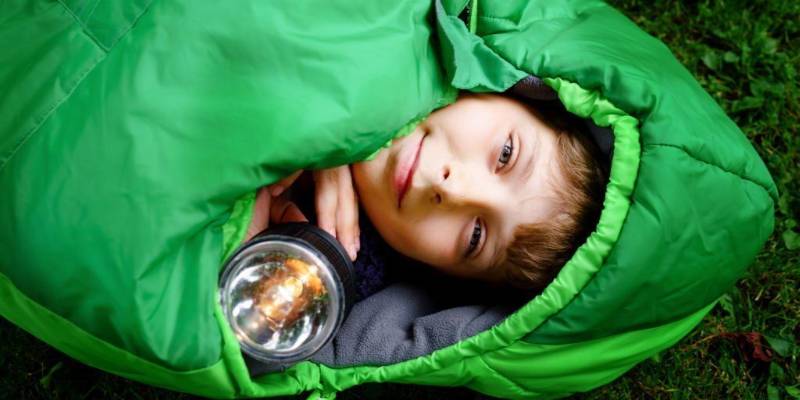
The currently valid DIN standard EN ISO 23537-1 only refers to sleeping bags for adults. Since children have a different sense of temperature and sleeping experiments with children are questionable for ethical reasons, there are no exact temperature ranges for children’s sleeping bags.
DIN EN ISO 23537-1 cannot therefore be transferred exactly to children and young people. The thermal information provided by the manufacturer for children’s sleeping bags is more of a guideline.
Also excluded from EN ISO 23537-1 are expedition and military sleeping bags, which have completely different requirements than those that could be presented using the standardized procedure. For example, the extreme limit of this standard is considered to be -20°C.
How Do You Rate Sleeping Bags Without an EN/ISO Temperature Specification?
If a sleeping bag without EN/ISO temperature specification is to be bought or chosen, we recommend observing the following tips:
- Plan for a buffer at the temperature specified by the manufacturer. No matter in what form, every manufacturer makes some kind of temperature specification for sleeping bags. However, it makes much more sense to plan a few degrees Celsius buffer for the respective purpose than to freeze afterward.
- Read through several tests on the respective sleeping bag and watch the corresponding YouTube videos. The best review videos are those that show the sleeping bag in action.
- Evaluate the sleeping bag based on the quality of the down (fill power) and the fill weight and compare these values with a sleeping bag that has been tested according to EN ISO 23537.
It should be mentioned positively that in recent years the number of manufacturers who do not provide information according to ISO/EN standards has decreased. You can still find such sleeping bags today. Therefore, models without EN/ISO specifications should be treated with caution.
Many such outfitters have their own company-specific evaluation system, which of course can differ greatly from the EN/ISO system according to EN 23537-1. The reasons for this are manifold and vary from manufacturer to manufacturer. It’s less about concealment tactics. After all, satisfied customers are a matter of course from a company’s point of view.
It’s common practice to rely on distinct rating systems for sleeping bag temperature specifications. For instance, manufacturers often employed their own systems to assess models long before the introduction of EN 13537.
Factors for Temperature Ranges in Sleeping Bags
In addition to the specified temperature ranges, the following factors play a role in how warm the sleeping bag is:
- Which environment is used? (tent, car, apartment, outdoor)
- Which sleeping pad is used?
- How much moisture (external or perspiration) is there?
- What clothes are worn?
- Sleeper physical characteristics (anatomy, fitness, gender)
- Satiety of the sleeper (hungry vs. full)
- Was alcohol consumed?
- Heat storage of the sleeper (cold vs. warm sleepers)
- How much moisture (external or perspiration) is there?
In addition to the specified temperature range of sleeping bags, all of these factors play an important role in selecting the right sleeping bag. As already mentioned, the EN 13527 test method uses a tent as the environment. If you only rely on the temperature ranges that a manufacturer specifies, taking this standard into account, you would have to take a tent environment into account.
For car campers or overnight stays at friends’ apartments, this is not necessarily the right approach. A very central point is the sleeping pad. This should not be too thin. So we recommend the use of a good air bed if possible. This avoids the cold on the ground and preserves the insulation of the sleeping bag.


